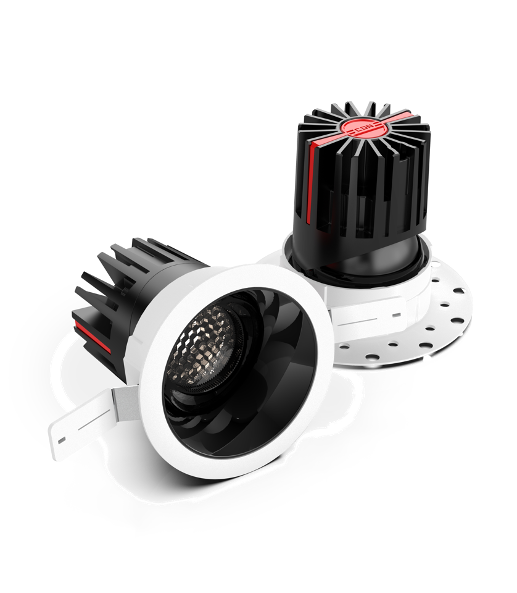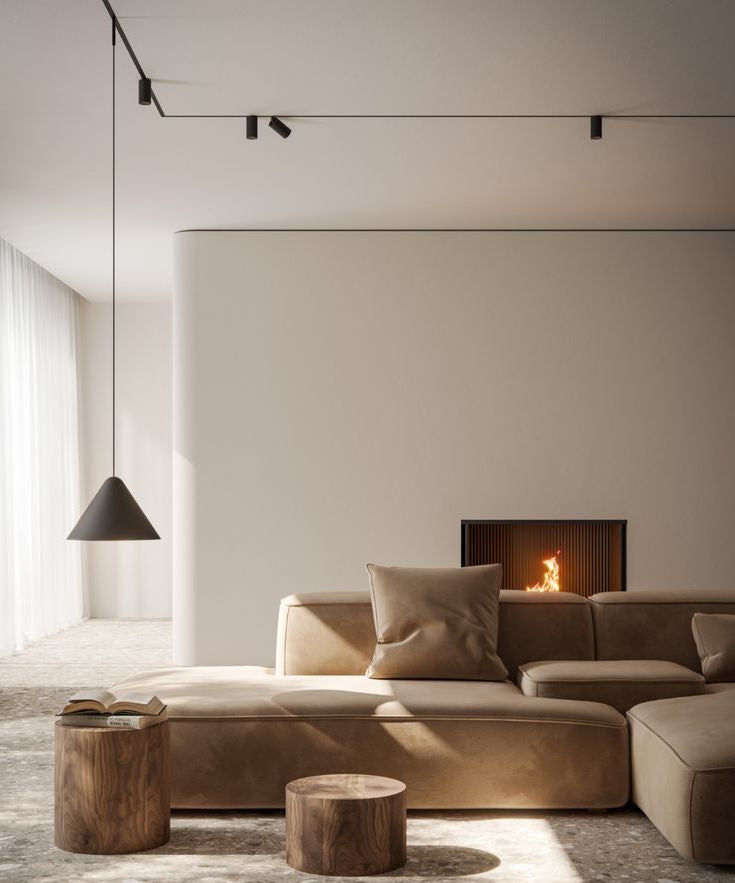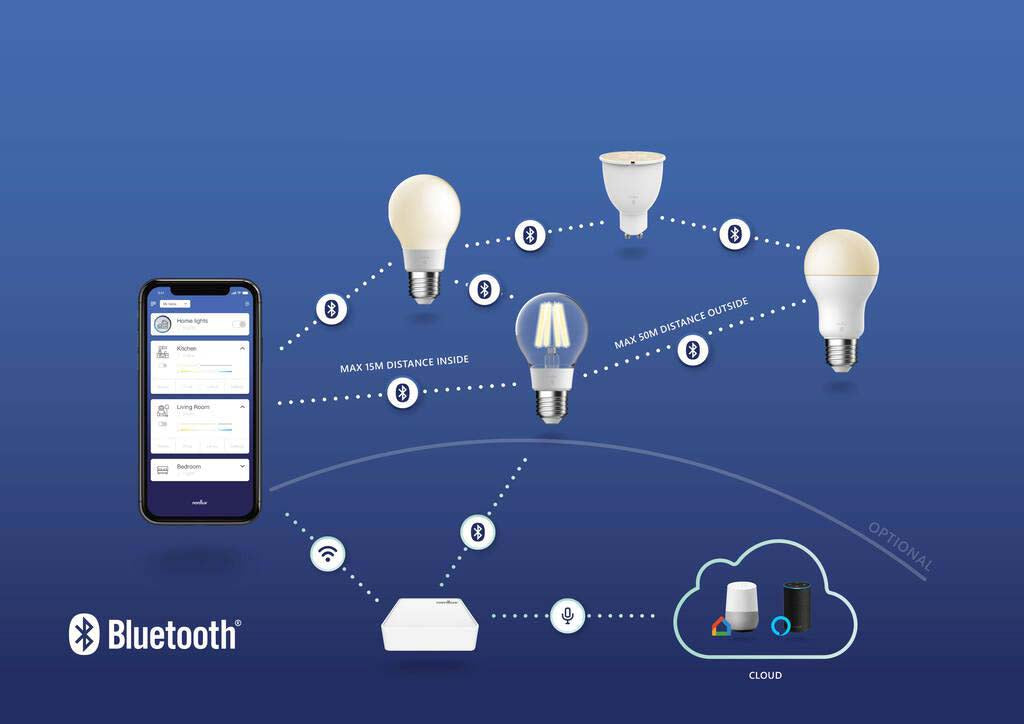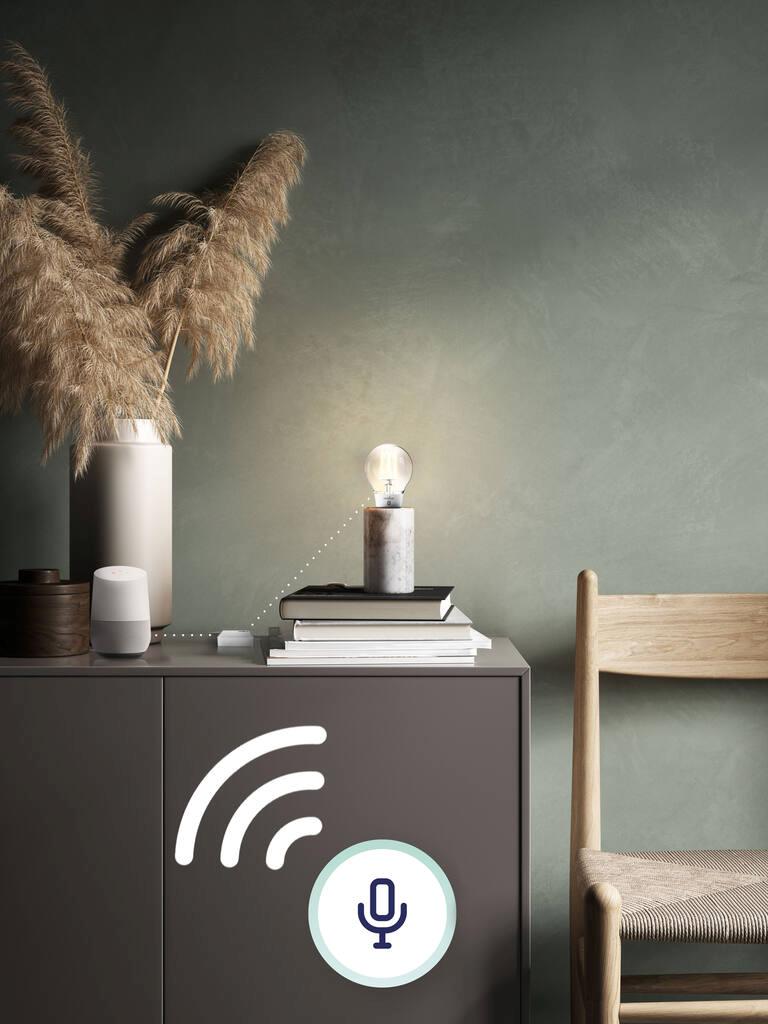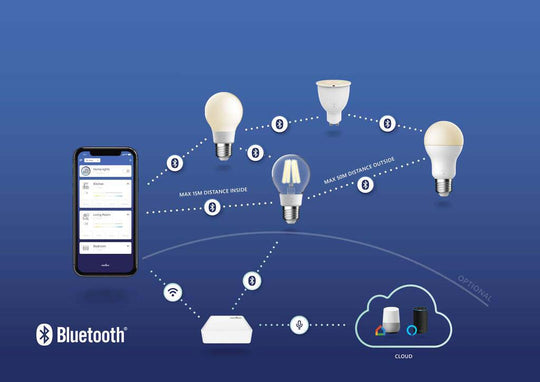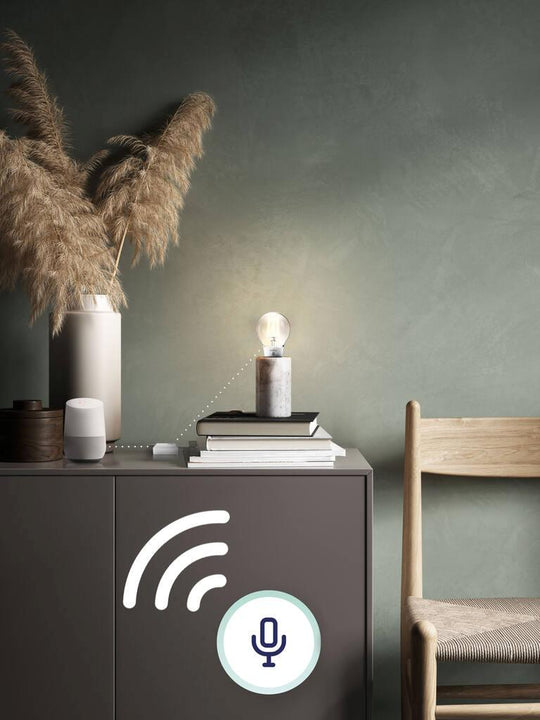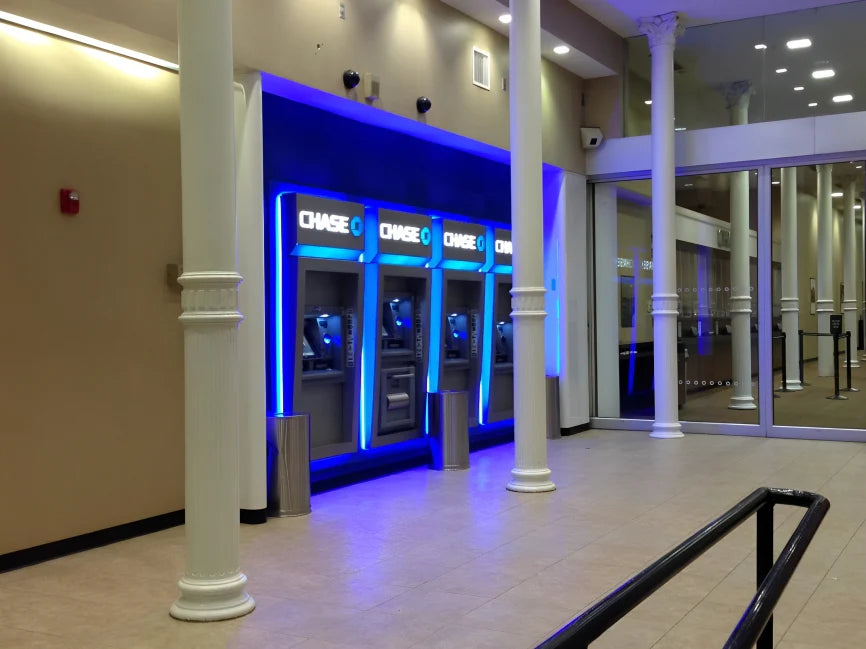Australia's Smart Lighting Market: Changing the way we buy and use lights
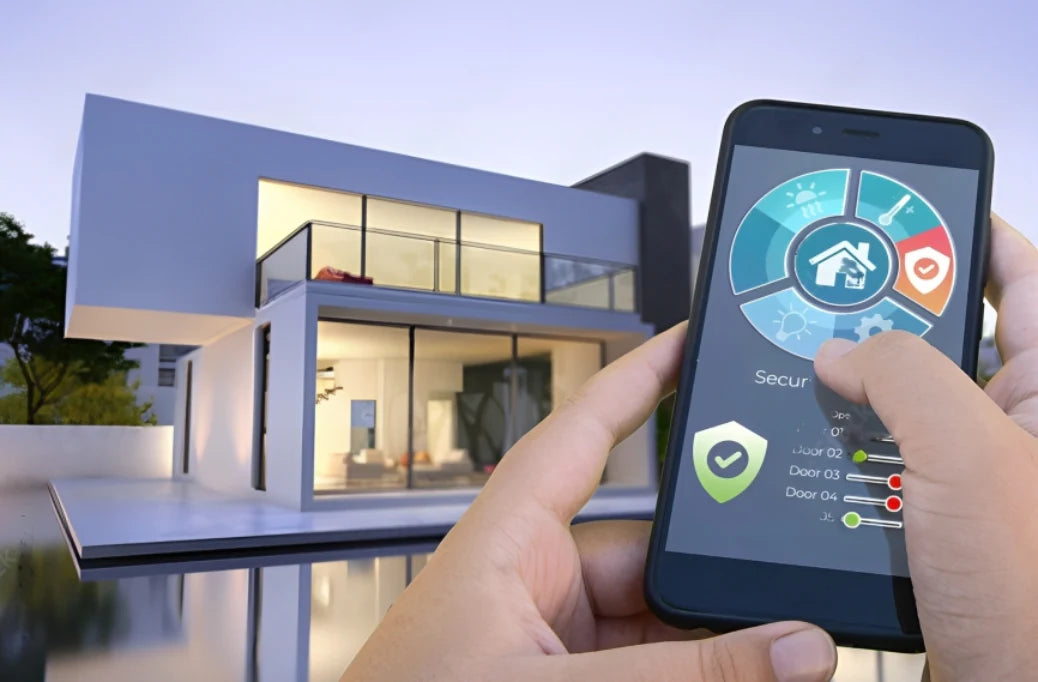
What is smart lighting?
Smart lighting involves the use of a mobile app or voice activation to maximise control and conveniently operate your lights, whether that be turning on and off, changing brightness, or changing colour. Complete lighting automation can be achieved by using a pre-set timer, based on your personal desired lighting schedule.
As a future of home automation is fast approaching, smart lighting is the first step. No need to worry about forgetting to turn off the lights, as you can control them through your phone from the supermarket, work, or any other remote location with access to the internet.
Smart lighting technology is growing quickly and has expanded to commercial enviroments. More and more smart lighting control systems can now be integrated with traditional lighting control systems, such as DALI and DMX, to extend lighting control capabilities, simplify installation, maintain sophisticated designs, and reduce costs.
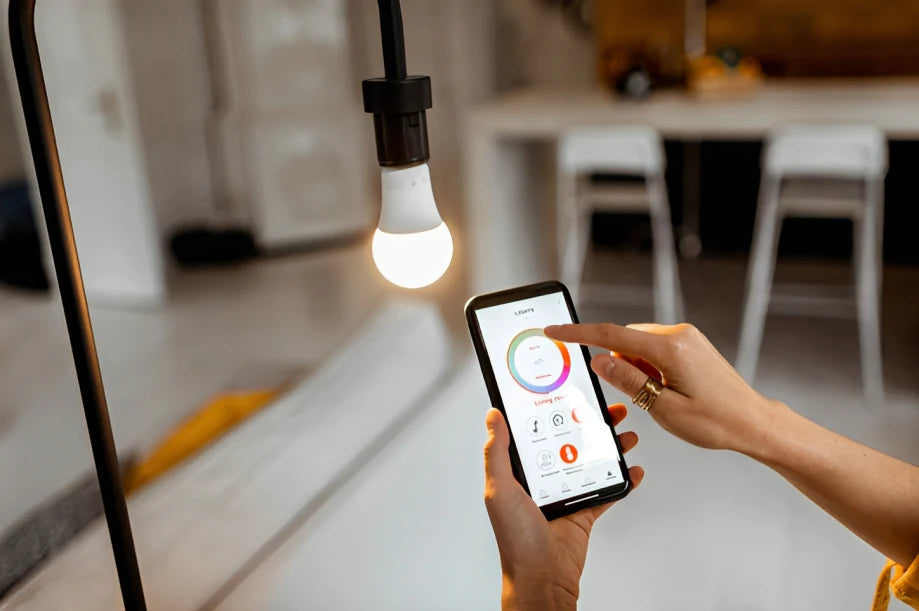
How does it work?
Smart lighting achieved by creating a wireless gateway between LED lights and users. In some cases, the light itself may be integrated with Wi-Fi or Bluetooth control capabilities. Alternatively, a separate communication bridge can be used to create a mesh gateway between the various lights and the user. Once the gateway is established, the user is able to remotely control their lighting by using a remote control, mobile app, voice control, or presetting routines.
Which smart lighting system is best for you?
A Wi-Fi lighting system is most suitable only in cases where a small number of smart lights are being used, perhaps for one particular room. Alternatively, if smart lighting is being used throughout the home, it is more appropriate to use a “hub-based” or “mesh” system.
Bluetooth enabled smart lights require a gateway in order to be controlled remotely, as bluetooth has a limited range. Bluetooth involves a 1 to 1 pairing, which means that bulbs cannot be controlled from multiple devices in the home.
If you are planning to use a multitude of smart LED lighting devices, bridge-based or hub-based systems are the way to go. These systems include Zigbee and Z Wave, which use a bridge module to create a “mesh” pathway between all light fittings so that they are able to communicate to each other, rather than each fitting receiving signals from the router individually.
What products are out there?
As more and more families are looking to simplify their daily routines with automated lighting, the Australian market for casual and hobby smart lighting is quickly expanding. There are a variety of products and suppliers available, from high-end brands such as Philips Hue and Casambi, to hobby some brands such as LifX.
Commercial grade smart lights, switches, and hubs are now widely available, and can be integrated with home automation systems for both residential and commercial applications.
SMART LIGHTS
In the current market, smart lighting is available as downlights, bulbs (bayonet, edison, GU10), ribbon lights, oyster lights, and even pendants. There are plenty of smart lighting options to match any interior design aesthetic or home decor. Many smart lights include ultra smooth dimming with as little as 1% increments of dimmability, as well as up to 16 million hues of RGB colours.

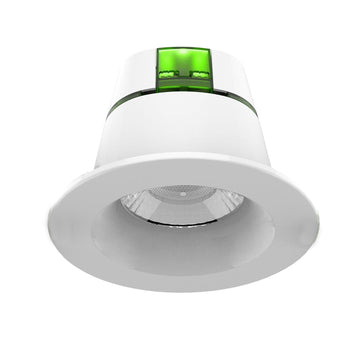

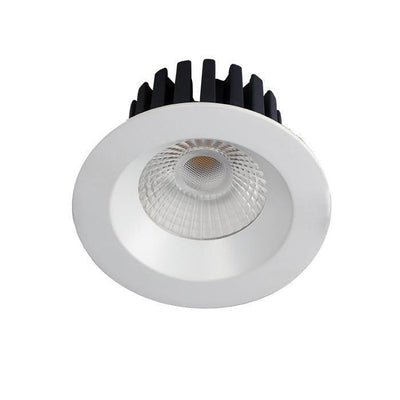

Featured
Smart Lighting
Use this section to easily call attention to one of your collections. We'll show photos of the first 5 products.
SMART SWITCHES AND DIMMERS
Smart switches and dimmers are integrated with Wi-Fi or Bluetooth capabilities, allowing them to be controlled via a mobile app or voice control. They are a direct replacement for existing switches or dimmers, meaning that you can achieve lighting automation just by replacing the switch, rather than replacing the individual light fittings.
So, is a smart switch better than a smart light? It is definitely more convenient to install, and a faster way of implementing lighting automation. However, smart switches alone will not produce the variety of effects, moods, and themes that smart lights are capable of.
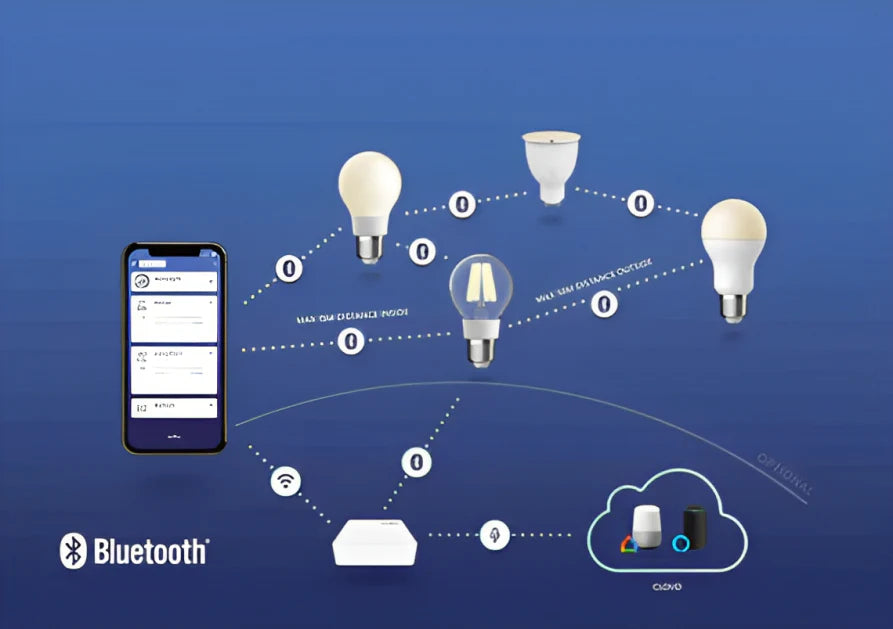
Smart Lighting Bridge
Communication “bridges” or “hubs” are used specifically in smart lighting systems where a number of different lights are to be integrated. These products create a “mesh” communication between lights, so they operate uniformly and cohesively.
Casambi offers smart dimmers and controllers, which transform any compatible LED product into a smart light. Casambi is a leading innovator in wireless lighting solutions, with cutting edge technologies and services, including custom smart lighting design, installation, and commissioning.
In addition to Casambi's core range of smart technologies, they also carry a wide range of eco-system products, including occupancy sensors, blind controls, and microwave sensors. These products are designed to work together to optimise the comfort, sustainability, and liveability of homes, offices, and commercial environments. Their huge range of innovative technologies meet all types of smart lighting requirements.
Casambi
Casambi offers smart dimmers and controllers, which transform any compatible LED product into a smart light. Casambi is a leading innovator in wireless lighting solutions, with cutting edge technologies and services, including custom smart lighting design, installation, and commissioning.
In addition to Casambi's core range of smart technologies, they also carry a wide range of eco-system products, including occupancy sensors, blind controls, and microwave sensors. These products are designed to work together to optimise the comfort, sustainability, and liveability of homes, offices, and commercial environments. Their huge range of innovative technologies meet all types of smart lighting requirements.
Smart Lighting Benefits In the home
What can smart lighting do?
One major feature is that you are able to sync and group together a collection of lights through the mobile app so that all fittings in one space operate as one unit. For example, if you have 6 downlights in the living area, you can group them all into one location on the phone app, and control all fittings in one go. This allows for uniformity in dimming and colour switching.
Themes and scenes can also be used to set any particular mood in an instant. The “Themes” feature turns the lights to different complementary colours without having to control each one individually. Using scenes, you can save customised light settings that work for a particular activity. Pre-select the appropriate brightness and colour temperature for various tasks such as cooking, watching a movie, or reading.
Are smart lights worth it?
While the initial costs may be daunting, their flexibility in terms of dimming and automation mean huge savings in the long-term. Save on energy and electricity costs by setting your lights on a predetermined routine on your mobile app, so that they automatically dim or turn off when they are no longer needed. Smart lights are the most convenient, hands free, and worry-free lighting technology. They can be operated from the comfort of your bed or couch by voice activation or through a mobile app. You no longer need to get up to physically toggle a light switch to get your desired level of light.
SMART LIGHTING BENEFITS FOR BUSINESSES
With a growing focus on workplace wellbeing, businesses are turning to smart lighting for human-centric lighting solutions. The system design plans aim to balance aesthetics with our biological and functional needs, putting workers and employees at the forefront. This begins with understanding employee alertness, workplace performance, and the sleeping patterns of occupants.
By understanding our natural circadian rhythm, lighting designers and commissioners can implement day-to-dusk lighting automation to complement our peaks and troughs in energy levels throughout the day. This is important in ensuring the wellbeing of workers by being able to recharge and return to work the next day, ready to work at an optimal productivity level.
It is also important to optimise the effectiveness of individual tasks, and boost the productivity of their employees. This can be achieved with smart lighting, due to its versatility in dimming, colour selection, and automated settings. With smooth 1% incremental dimming capabilities, solutions can be tailored to any specific task, at any time of day. Many products also have RGB capabilities in 16 million hues, as well as day-to-dusk settings to complement our circadian rhythm.
SMART LIGHTING FOR OUTDOORS
Many smart lighting products have IP-ratings, which certify their suitability for outdoor lighting such as porch lights, deck lights, or garden lights. Smart strip lights and deck lights are a unique way to create fun and inviting atmospheres for barbecues and pool parties. Use pre-set themes for exciting lighting effects to complement any outdoor gatherings with family and friends.
Smart lighting also proves to be the ideal solution when it comes to ensuring security and safety at night. By setting day-to-dusk timed lights, you can be sure that security lights will turn on automatically at the appropriate time, allowing for safe navigation of the driveway and garage spaces when driving. Automatic outdoor lighting has also been shown to deter potential intruders at night.
